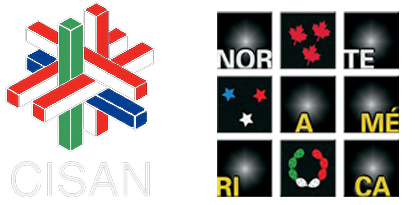Abstract
The main purpose of this article is to analyze the labor market integration of documented and undocumented skilled Mexican immigrants in Los Angeles Metropolitan region during the global recession of 2008. To this end, we use a mixed methodological approach. From the quantitative perspective, we analyze data from the American Community Survey. The qualitative approach includes 20 open-ended interviews with Mexican skilled immigrants. The main findings reveal that skilled immigrants were not negatively affected by the global recession. In addition, legal immigration status turned out to be the most important factor in differentiating those who obtained a skilled occupation and those who did not. However, some immigrants, including those who were undocumented, were able to strategically use their investment in human capital and their access to professional social networks in order to obtain professional occupations.
References
Alarcón Acosta, Rafael. 2007 “The Free Circulation of Skilled Migrants in North America”, in Migration Without Borders. Essays on the Free Movement of People, Antoine Pécoud y Paul De Guchteneire, eds., UNESCO-Oxford-Berhahn Books, París, Francia, pp. 243-257.
Alarcón, Rafael, Escala Luis y Odgers Olga. 2016 Making Los Angeles Home. The Integration of Mexican Immigrants in the United States. Berkeley: University of California Press.
Alarcón Acosta, Rafael, Escala Rabadán, Luis and Odgers Ortiz, Olga. 2012 Mudando el hogar al Norte: trayectorias de integración de los inmigrantes mexicanos en Los Ángeles, El Colegio de la Frontera Norte, México.
Batalova, Jeane, Fix, Michael and Creticos, Peter. 2008 Uneven Progress. The Employment Pathways of Skilled Immigrants in the United States, Migration Policy Institute, Washington, D.C. http://www.migrationpolicy.org/pubs/BrainWasteOct08.pdf
Bureau of Labor Statistics. 2008 The Employment Situation: October 2008, Washington, en http://www.bls.gov/news.release/pdf/empsit.pdf
Calva Sánchez, Luis Enrique. 2014 “La migración calificada de mexicanos a Estados Unidos y su inserción al mercado laboral”. Tijuana, El Colegio de la Frontera Norte. Tesis de Doctorado en Ciencias Sociales con Especialidad en Estudios Regionales.
Calva Sánchez, Luis Enrique y Rafael Alarcón. 2015 “La integración laboral precaria de los migrantes mexicanos calificados en Estados Unidos al inicio del siglo XXI”, Papeles de Población, vol. 21, núm. 83, enero-marzo, pp. 9-39.
Castells, Manuel. 1996 The Rise of the Network Society, Blackwell, Cambridge, MA.
Chaloff, Jonathan and Lemaître, George. 2009 “Managing Highly-Skilled Labour Migration: A Comparative Analysis of Migration Policies and Challenges”, in OECD Countries. OECD Social Employment and Migration. Working Papers, núm. 79, pp. 1-54.
Chiswick, Barry, Yew, Lee and Miller, Paul. 2002 “Longitudinal Analysis of Immigrant Occupational Mobility: A Test of the Immigrant Assimilation Hypotesis”, Discussion Paper Series, núm. 452, Institute for the Study of Labor IZA. http://ftp.iza.org/dp452.pdf
Coleman, James. 1990 Foundations of Social Theory, Harvard University Press, Cambridge.
Docquier, Frederic and Rapoport. Hillel. 2008 “Skilled Migration: The Perspective of Developing Countries”, Discussion Paper Series, núm. 2873. Institute for the Study of Labor. http://ssrn.com/abstract=625259
Galicia Bretón Mora, Fabiola. 2012 Inserción laboral de inmigrantes calificados de Zacatecas, Oaxaca y Veracruz en Los Ángeles, California., Tesis de Doctorado en Ciencias Sociales con Especialidad en Estudios Regionales, El Colegio de la Frontera Norte, disponible en < https://www.colef.mx/posgrado/tesis/2006754/>
Instituto Nacional de Geografía y Estadística. 1980, 1990 and 2000 Censos de Población y Vivienda.
Conteo de Población y Vivienda.
International Labor Organization. 2007 “Resolution Concerning Updating the International Standard Classification of Occupations, 2008” disponible en http://www.ilo.org/public/english/bureau/stat/isco/docs/resol08.pdf
Iredale, Robyn. 2001 “The Migration of Professionals: Theories and Typologies”, International Migration, vol. 39, núm. 5, pp. 7-26.
Los Angeles County Economic Development Corporation. 2009 “L.A. Stats. Frequently requested statistics for Los Angeles and surrounding counties on demographics, employment, income, economic base, real estate, retailing, and more”, Los Angeles County Economic Development Corporation, Los Angeles, en <http://www.laedc.org/reports/LAStats-2008.pdf>
Lozano Ascencio, Fernando, Luciana Gandini y Telésforo Ramírez-García. 2015 “Devaluación del trabajo de posgraduados en México y migración internacional: los profesionistas en ciencia y tecnología” Migración y Desarrollo 25, pp. 61-89.
Martínez Pizarro, Jorge. 2010 “Migración calificada y crisis: una relación inexplorada en los países de origen”, Migración y Desarrollo, Vol. 7, Núm. 15, pp. 129-154.
Massey Douglas, Alarcón, Rafael, Durand, Jorge and González, Humberto. 1987 Return to Aztlan. The Social Process of International Migration from Western Mexico, University of California Press.
McLaughlan, Gail and Salt, John. 2002 “Migration Policies Towards Highly Skilled Foreign Workers, Migration Research Unit Geography Department University College London”, Report to the Home Office. http://www2.geog.ucl.ac.uk/mru/docs/highly_skilled.pdf
Passel, Jeffrey S. and D’Vera Cohn. 2008 “Trends in Unauthorized Immigration: Undocumented Inflow Now Trails Legal Inflow”, Pew Hispanic Center, Washington, D.C. https://www.pewresearch.org/hispanic/2008/10/02/trends-in-unauthorized-immigration/
Portes, Alejandro. 1995 “Economic Sociology and the Sociology of Immigration: A Conceptual Overview”, in The Economic Sociology of immigration. Essays on Networks, Ethnicity and Entrepreneurship, Alejandro Portes, Ed., Russell Sage Foundation, New York, pp. 1-41.
Ramírez-García, Telésforo and Tigau Camelia. 2018 “Mujeres mexicanas altamente calificadas en el mercado laboral estadounidense: ¿integradas o segregadas?”, Sociedad y Economía, núm. 34, pp. 75-101. https://www.doi.org/10.25100/sye.v0i34.6475
Rich, Robert. 2008 “The Great Recession. December 2007–June 2009” Federal Reserve History, November 22, 2013, in https://www.federalreservehistory.org/essays/great-recession-of-200709
Ruggles, Steven, Sarah Flood, Ronald Goeken, Josiah Grover, Erin Meyer,
Jose Pacas and Matthew Sobek. 2003-2012 American Community Survey (ACS). IPUMS USA, version 10.0 [dataset]. MN: IPUMS, Minneapolis,
Salt, John. 1992 “Migration Processes among the Highly Skilled in Europe”. International Migration Review, vol. 26 núm 2, pp. 484-505.
Sassen, Saskia. 1993 La Movilidad del Trabajo y del Capital. Un estudio sobre la corriente internacional de la inversión y del trabajo, Ministerio de Trabajo y Seguridad Social, Madrid
Waldinger, Roger and Bozorgmehr, Mehdi. 1996 “The Making of a Multicultural Metropolis”, in Ethnic Los Angeles, Roger Waldinger and Mehdi Bozorgmehr, eds. Russell Sage Foundation, New York, pp. 3-37.
Yale-Loehr, Stephen. 1991 Understanding the Immigration Act of 1990, Federal Publications, Washington.
Zaletel, Petra
“Competing for the Highly Skilled Migrants: Implications for the EU Common Approach on Temporary Economic Migration”, European Law Journal, vol. 12, núm. 5, pp. 613-635.

This work is licensed under a Creative Commons Attribution-NonCommercial-NoDerivatives 4.0 International License.
Copyright (c) 2024 Fabiola Galicia Bretón Mora, Rafael Alarc´ón Acosta



